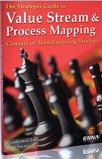|

W. Edwards Deming
All models are wrong.
Some models are useful.
|
Models Influence Thinking
A difficulty with models of any sort is that people tend to identify them with the real
system. But, as
Alfred Korzybski stated, "The map is not the territory." Models, by their nature are
simplified versions of reality. They approximate certain aspects of reality and ignore others.
This simplifies our perception and makes the problem comprehensible. The danger is that
some of the ignored aspects are, in fact, critical to the issue we are trying to understand.
Deming's quote (above) also relates to this.
The fallacies that a model introduces are often hazardous because they are subtle and
unconscious. Not knowing what you do not know is a most dangerous situation as Oedipus
discovered in early Greek tragedy,
System Robustness
If we take the Parthenon model of TPM too literally, it implies that the TPM system is quite
robust. It implies that each pillar is independent. A crack in the column or even a missing
column seems unlikely to bring down the entire structure. Thus managers are tempted to ignore or
postpone aspects of TPM that they perceive as difficult, expensive or unpleasant.
Corporate culture is one such difficult and unpleasant issue. Suppose a company implements
TPM without addressing their negative corporate culture. The improvement in operator attitudes
in figure 9 is not realized or is negated by the overwhelmingly unpleasant culture. This cancels
out three of the most important reinforcing loops and will seriously limit TPM's gains.
|
Benefit Growth
The Parthenon model (subtly) implies that the benefit growth is more or less linear and
depends on how well each component (pillar) is implemented and when it is implemented. It would
lead us to imagine that two stout columns are equivalent to five skinny columns. This may or may
not be more or less true, depending on many factors in the individual situation.
The Parthenon model also implies that once a "pillar" is in place, no further construction is
required; Do this, get that; a linear relationship.
The dynamic model, in contrast, emphasizes the feedback loops that often lead to exponential
growth. It also shows, more clearly, relationships between various aspects. It implies the very
complex and (often) unpredictable behavior of dynamic systems.
Limits of The Dynamic Model
The dynamic model of figure 9 also has limitations. It is not intended to replace the
Parthenon model but, rather, to supplement it.
One difficulty with the dynamic model is that it gives few hints about the tasks or
techniques required for implementation. With the Parthenon model we can ask, for example, "What
do we have to do to integrate Maintenance and Quality?" The answers lead to specific tasks and
tools for accomplishing those tasks.
In reality, both models are necessary and there are undoubtedly other models or variations
that would also be helpful. It is like observing sunsets. A sunset looks very different from a
beach, from a mountain valley, the desert, the arctic or from an aircraft. Each perspective is
different and each has value.
|





